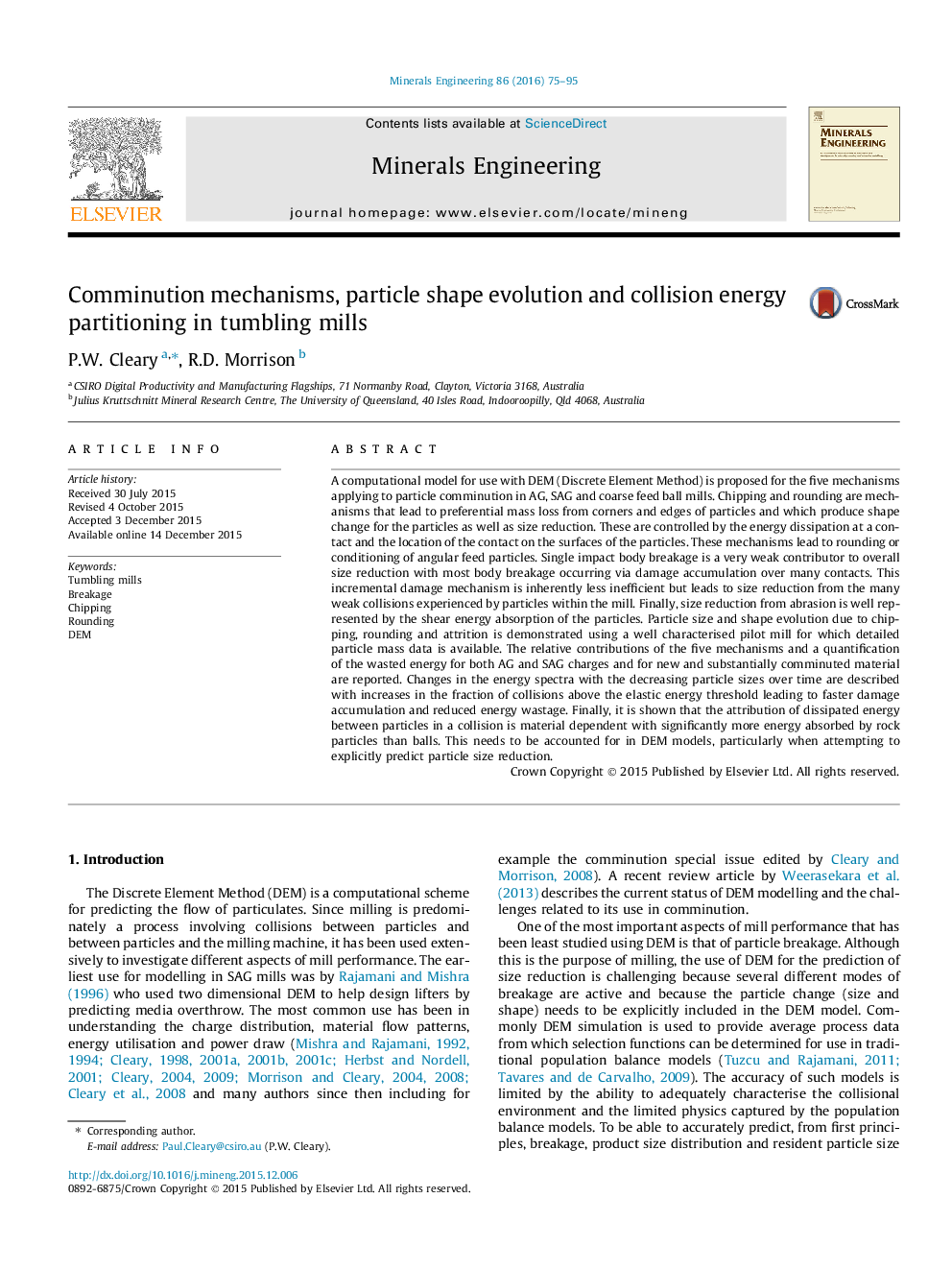| کد مقاله | کد نشریه | سال انتشار | مقاله انگلیسی | نسخه تمام متن |
|---|---|---|---|---|
| 232812 | 465307 | 2016 | 21 صفحه PDF | دانلود رایگان |
• Five mechanisms for size reductions in mills are identified.
• DEM models for all five mechanisms are developed and demonstrated.
• Most body breakage occurs via damage accumulation over many collisions.
• Particle shape change due to rounding and chipping is quantified for a tumbling mill.
• The split of energy between colliding particles is critical to breakage prediction.
A computational model for use with DEM (Discrete Element Method) is proposed for the five mechanisms applying to particle comminution in AG, SAG and coarse feed ball mills. Chipping and rounding are mechanisms that lead to preferential mass loss from corners and edges of particles and which produce shape change for the particles as well as size reduction. These are controlled by the energy dissipation at a contact and the location of the contact on the surfaces of the particles. These mechanisms lead to rounding or conditioning of angular feed particles. Single impact body breakage is a very weak contributor to overall size reduction with most body breakage occurring via damage accumulation over many contacts. This incremental damage mechanism is inherently less inefficient but leads to size reduction from the many weak collisions experienced by particles within the mill. Finally, size reduction from abrasion is well represented by the shear energy absorption of the particles. Particle size and shape evolution due to chipping, rounding and attrition is demonstrated using a well characterised pilot mill for which detailed particle mass data is available. The relative contributions of the five mechanisms and a quantification of the wasted energy for both AG and SAG charges and for new and substantially comminuted material are reported. Changes in the energy spectra with the decreasing particle sizes over time are described with increases in the fraction of collisions above the elastic energy threshold leading to faster damage accumulation and reduced energy wastage. Finally, it is shown that the attribution of dissipated energy between particles in a collision is material dependent with significantly more energy absorbed by rock particles than balls. This needs to be accounted for in DEM models, particularly when attempting to explicitly predict particle size reduction.
Journal: Minerals Engineering - Volume 86, February 2016, Pages 75–95
